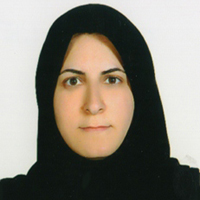The Rhythmic Type of Persian: A Phonological Perspective
In rhythmic typology, languages are categorized into stress-timed and syllable-timed types. Earlier studies have highlighted the isochrony of interstress intervals and syllables in stress-timed and syllable-timed languages, respectively. Recent studies suggest that rhythm type depends on the characteristics of the phonological system of each language. Lexically marked stress, robust correlates of stress, stress-sensitive segmental rules, and complex syllable structures are the characteristics of stress-timed languages. On the other hand, the characteristic properties of syllable-timed languages are non-lexical stress, relatively weak correlates of stress, non-application of stress-sensitive segmental rules, and simple syllable structures. The present article investigated these phonological properties in Persian. Persian has been classified as a syllable-timed language. We hypothesized that the rhythmic type of Persian is the direct consequence of its phonological properties. Evidence shows that stress plays a weak role in Persian phonology. Hence, it seems to belong to the type of syllable-timed languages.
Languages are classified into syllable-timed or stress-timed types based on rhythm. In the earliest studies in the field of rhythmic patterns (Pike, 1945; Abercrombie, 1967), the term ‘stress-timed’ referred to languages in which stress tended to be repeated at approximately the same time intervals, and as a result, the number of intervening unstressed syllables varied. In contrast, in syllable-timed languages, all syllables were considered to have approximately equal duration and the length of intervals between stressed syllables depended on their number (Dauer, 1983).
Later studies (Eriksson, 1991; Mairano, 2011) challenged the concept of "isochrony" and argued that rhythm has its roots in the phonological properties of languages (Donovan & Darwin, 1979; Lehiste, 1979). The lexical status of stress (Wagner, 2008: 115; Nishihara & van de Weijer, 2011), the application of stress-sensitive phonological rules with an emphasis on vowel reduction (Baltazani, 2007: 41; Nishihara & van de Weijer, 2011: 157), and the complexity of syllable structure (Wagner, 2008: 115; 24; Nishihara & van de Weijer, 2011: 158) were introduced as the phonological features of stress-timed versus syllable-timed languages.
In the present study, the rhythmic type of Persian is investigated based on the phonological structure of this language. According to Haghshenas (1978: 129), Persian is a syllable-timed language, the quality which arises from the approximate equalization of all short syllables, on the one hand, and all the medium and long syllables, on the other. Having measured the normalized index of Persian vocalic intervals, Buban (2007) indicated that Persian shows a tendency towards the syllable-timed type.
This study is descriptive-analytic in nature and the discussion in this paper is based on previous research on Persian and rhythmic typology. Phonological characteristics of stress-timed versus syllable-timed languages including the status of lexical stress, phonetic correlates of stress, sensitivity of segmental rules to stress/syllable structure, and syllable complexity were used to determine the rhythmic type of Persian. Since English is known as a prototypical stress-timed language, the rhythmic type of Persian is discussed in comparison with this language.
The location of stress is fixed and falls on the last syllable of most grammatical categories (Samei, 1995: 19) in Persian. Due to its predictablility, lexical stress is not marked in the lexicon. In contrast, lexical stress is sensitive to syllable weight, grammatical category, morphological structure, and the origin of the word in English. Nevertheless, due to its relative predictability, stress is not marked in the lexicon for many words in this language.
In languages in which stress bears a high functional load, stress is represented by more robust phonetic correlates (Auer, 1991: 296; Mairano, 2011: 71). In fixed-stress languages, weaker acoustic correlates are utilized to mark the prominence of stressed syllables (Peperkamp & Dupoux, 2002). Sadeghi (2018: 71) has reported duration to be the sole acoustic correlate of Persian lexical stress. The robustness of this cue is not as high as that of a stress-timed language like English in which multiple correlates are employed to highlight stressed syllables over unstressed ones.
Persian has no stress-sensitive phonological rule. The observed stress-sensitive vowel reduction (Gharaati, 2010; Alinejad, 2012) is only acoustic with no phonological consequences. In contrast, English has a number stress-sensitive rules, including vowel reduction in unstressed positions and the aspiration of voiceless stops at the beginning of stressed syllables.
As a language shifts from stress-timed to syllable-timed, the ratio of simpler syllable structures increases. Moreover, in syllable-timed languages, vowel insertion and liaison rules apply to parse heavy syllables into light ones. In Persian, with a simple structure (Alamolhoda, 2000), the number of consonants between two vowels fluctuates between one and three. There is also a strict limit on the number of consonants in onset or coda positions. Analyzing the onset consonant clusters of English shows that as the stress shifts toward the end of the word, the number of onsetless words increases and, in most cases, consonant clusters are present in stressed syllables (Orzechowska, Mołczanow & Jankowski, 2019).
Jun (2005), Abolhasanizadeh, Bijankhan & Gussenhoven (2012: 1392), and Sadeghi (2018), have introduced Persian as a stress-accent language like English, based on the acoustic correlates of stress. Rahmani (2019), on the other hand, has argued that “tones” are the sole acoustic correlates of lexical prominence in Persian in a pattern similar to tonal languages. The authors of the present study argue that Persian is not a stress-accent language soley on the basis of the acoustic correlates of stress. Rather, the tendencies of the whole phonological system confirm that stress does not play a key role in this language. Due to the importance of syllable in the phonological system of Persian, this language is considered to be a syllable-timed language.
- حق عضویت دریافتی صرف حمایت از نشریات عضو و نگهداری، تکمیل و توسعه مگیران میشود.
- پرداخت حق اشتراک و دانلود مقالات اجازه بازنشر آن در سایر رسانههای چاپی و دیجیتال را به کاربر نمیدهد.



